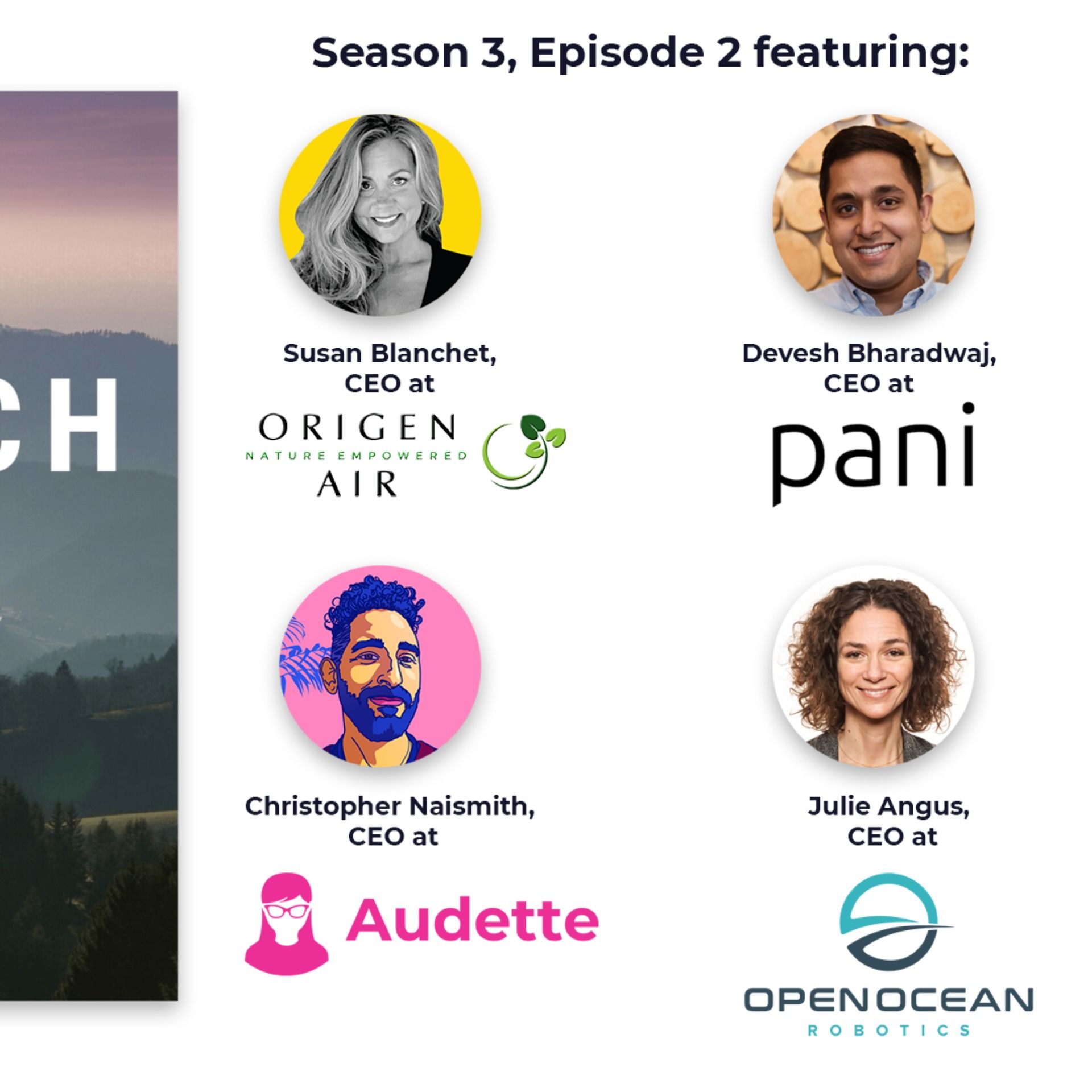4.20 - what stage of raising are each of the guests at?
-dilutive versus non-dilutive funding
-time and effort that goes into raising, especially when it comes to signing the paperwork
-ISED and IRAP funding
-SDTC’s funding program
8.25 - takeaways or learnings?
-how to qualify investors
-what to expect throughout the process
11.00 - closing on a “Safe” (a simple agreement for future equity)
-investment mechanism that’s well suited to early-stage rounds
13.00 - surprises about raising?
C: angel markets in Victoria and Vancouver don’t particularly like the Safe option
J: non-traditional space and complexity of software plus hardware is more challenging for many VCs
D: stage of the company and product market fit, get in the network as early as you can through accelerators
17.40 - the least favourite part about raising?
J: rejection, but use it as a source of learning
D: it’s like a sales cycle
22.50 - SDTC funding and what to consider when applying
24.45 - don’t ignore your personal network, they want a good opportunity too
27.00 - get to revenue as fast as you can to appeal to most investors
27.20 - it is a sales cycle and you can create a sense of FOMO, audit the team you’re working with as much as they’re auditing you
29.00 - one thing you wish you had known before raising?
C: at first, we thought we had to tick all the boxes, and answer all the questions that were being asked of us, investor red flag because there are certain things you should be figuring out together as you go
S: hardware/software company and you’re competing against SaaS companies so there’s no way you’re going to be as successful - “comparing oranges to watermelons”
J: if you structure it like a sales process, you’re really setting yourself up for success
33.33 - D: making good business fundamentals, focus on making a good business and get early criticism, speak to industry experts to continue improving your offer
“That awareness [of what problems a company could have] at seed stage, pre-seed stage is key, which many entrepreneurs don’t have, so you separate yourself right away if you do.”
34.19 - Devesh talks about the four types of investors (high net worth individuals, family offices, different types of VCs, and strategic investors)
36.45 - what to do with feedback from investors who aren’t interested
“If you can get away from your ego being hurt by rejection and take everything that you learn from those, you really can get a better product market fit.”
38.10 - one piece of advice for a fellow entrepreneur at the start of their fundraising journey? What is the critical takeaway? Or an experience with an investor that became an integral part of the business?
S: “What do you want from us, besides the money?” that is a really key question to think about and know the answer to
-be choosy, this is a marriage
J: "It might feel like you’re the one that’s asking things of people, you’re the one that’s begging for money, but that’s not really the way you should look at it..." -offering something that has tremendous value
Grit is needed to be an entrepreneur and grit will be needed throughout your investor journey as well.
C: Two-fold. One: It’s never too early to build a clean data room. Makes the investor’s job easier. Two: Find your lead. The lead investor can host other investors.
D: lots of articles to learn from, starting as early as possible for data room, it’s truly never too early
-make sure you’re focusing on your business fundamentals
-get some indication of revenue, of customers using it, the more you can do that, the better your fundraising process will be

